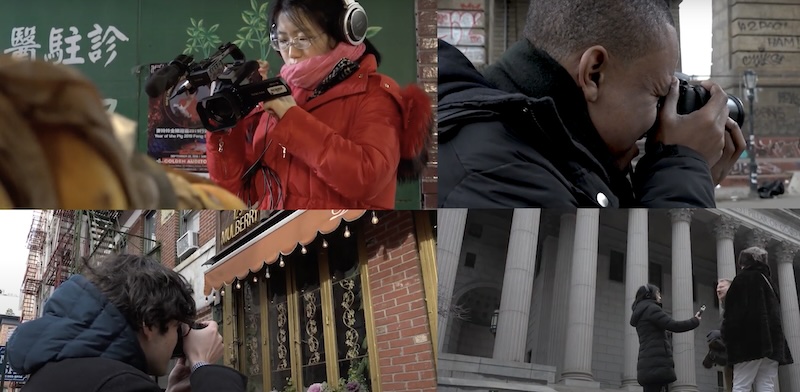We had no idea what to expect when we launched the American Journalism Online Master’s Program last year. We didn’t know how many students would enroll in the first — and still only — online master’s program at NYU’s Graduate School of Arts and Science. We didn’t know where they would come from, what kinds of experience they would have, or what their expectations would be.
In a sense, we were flying blind, comforted by the belief that we were creating something special. We knew we’d created engaging courses with the expert guidance of Lucy Appert, director of the Office of Educational Technology for Arts and Sciences, and educational technologist Lydia Page. And we knew that with my 16 years of experience teaching journalism at NYU, we had access to a valuable network of mentors and instructors. If people can make all the difference in creating a successful product, boy, do we have that covered.
As we approach the halfway point of our second semester and prepare to read applications for the entering class in the fall of 2020, I can share with you what we’ve learned thus far.
I’ll start by saying that practically every assumption we made about our students before launching the program has proven wrong. Let me take you back to April 2019. We’d just gotten approval from New York State to launch the program, so we hit the “publish” button on our website. It’s late in the application season, so we had precious little time for recruitment. But the deans told us not to worry. They would view it as a success if we got just a handful of students in our inaugural class.
Four months later, we had 21 students.
It’s important to note here that a third of the graduate students in our (what I call) terrestrial journalism master’s programs are international students. We figured the same would hold true for the online program. Instead, 18 of our first class of 21 live in the United States. One student hails from Canada, another the Bahamas, and a third is an ex-pat living in India. But the state and country lines quickly blurred as many of them travel often for work or pleasure, and location doesn’t seem to make a difference in the student experience.
Half of the students already work (or have worked) in media and content creation. Many seek a part-time option to allow them the chance to gain new skills and knowledge to help advance their careers. They are on staff at ABC News and Good Morning America, at Dow Jones and The New York Post. They are professional freelance writers and one appeared on-air for NBC covering the NFL, MLB, BMX and more before stepping aside to raise a family. Another works as a documentary filmmaker for the United Nations and hopes to transition to journalism. Other students came straight out of college or are intent on making a career change. One thing every student shares is a passion for journalism.
Students like the flexibility we offer. In the first semester, the majority (16) enrolled part-time, taking one or two classes so they can continue to work full time. Five students chose the full-time option, taking three courses a semester. Students can earn their master’s degree in less than a year or take as much time as they need to (up to five years).
Because the program is viewed as a substantial success at NYU, we have been able to attract world-class professors. My colleague, Pulitzer Prize-winning writer Eliza Griswold, teaches feature writing to our students. So does acclaimed journalist/novelist Julia Dahl. Melanie Hicken, a former graduate student of mine, is an investigative reporter for CNN and teaches Investigative Reporting. One of our multimedia instructors, Rebecca Davis, was a producer at NBC News and Vox, while the other, Emily Hager, shot and edited video for The New York Times and Wall Street Journal. We also traveled to New Hampshire in February to get on-the-ground reporting experience during the primary election. Student work was published here on The Click, our program’s publication where students publish clips throughout their time in the program.
We regularly survey our students and they report that they are wildly enthusiastic about the program. Part of the reason, I think, is that we keep our classes small. My Law & Ethics class this past fall, for example, had 14 students. Multimedia courses cap out at eight students. Writing classes range from 9-12 students. This ensures that students receive ample individual attention.
Another interesting phenomenon: Class discussion is at an enviable high level. In a traditional classroom, students’ eyes dart between the teacher and their laptop, and it can be hard to tell whether students are paying attention or surreptitiously buying shoes on Amazon. But on Zoom, the video conferencing platform we use, the professor and students are eye to eye to eye; there is nowhere to hide, and everyone is equal. This fosters great class participation. I have taught at NYU for 16 years and the student evaluations I received for my first online class were the highest I’ve ever gotten.
We expect we will grow substantially this coming fall. But no matter how many students we enroll, classes will remain small, the course materials will be engaging and informative, and courses will be helmed by professors, who are top professionals in the field.
We’re excited about where we are and where we are headed, and hope you’ll consider joining us.


